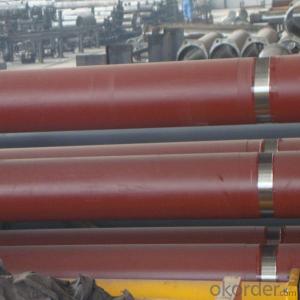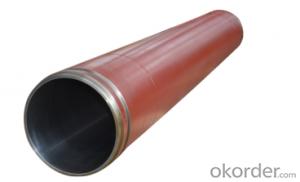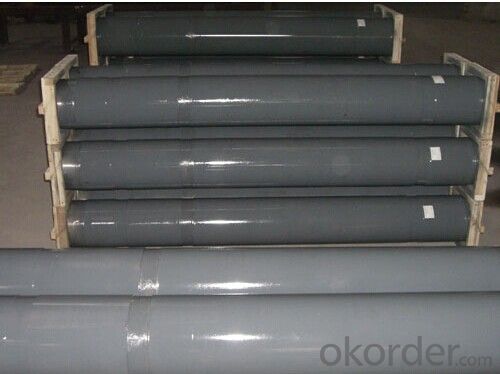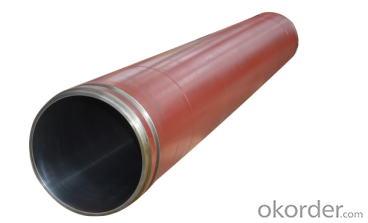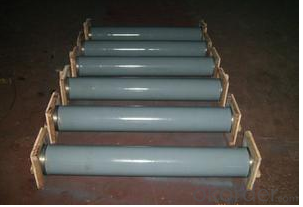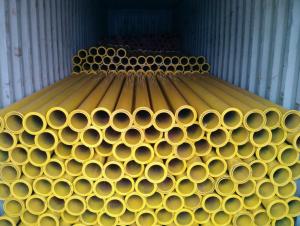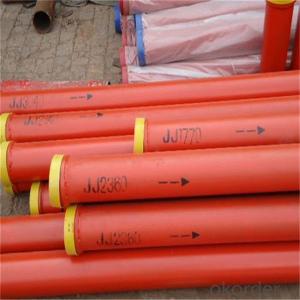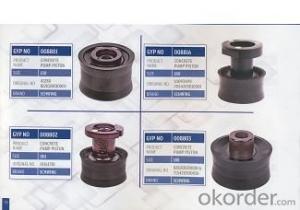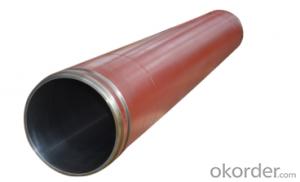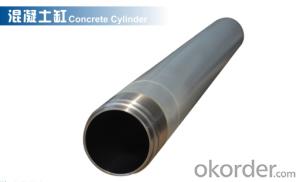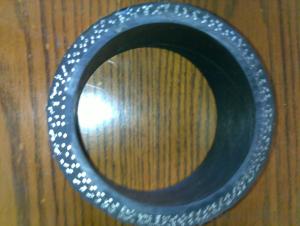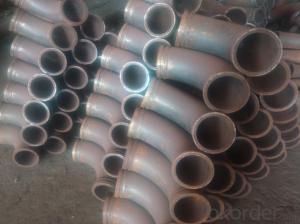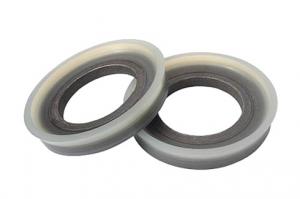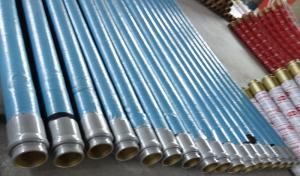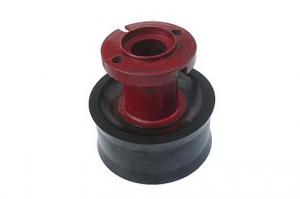Concrete Pump Delivery Cylinder DN200*1775(SCHWING)
- Loading Port:
- Shanghai
- Payment Terms:
- TT OR LC
- Min Order Qty:
- 2 pc
- Supply Capability:
- 1000 pc/month
OKorder Service Pledge
OKorder Financial Service
You Might Also Like
Product Description:
The Concrete Pump Delivery Cylinder DN200*1775(SCHWING) usually made by steel material No. C45. by Chinese standard according to customer’s requests as well, and it will be packed in bundles or nude packing directly put into container.Most of customers likes to buy it together with delivery pipes and elbows.
Scope of Application of the Cylinders
The Concrete Pump Delivery Cylinder DN200*1775(SCHWING) is a concrete pumping parts for combined use with other concrete pumps parts in concrete pumping operations. It can be widely used on Schwing stationary pump, Schwing truck pumps as well.
This Concrete Pump Delivery Cylinder DN200*1775(SCHWING) can only be used in Schwing concrete pump construction operations, but not in any other operations, like dragging, moving, or hoisting heavy articles or personnel. The pipe is also not allowed to be used in any location where any combustible or explosive material exists or a cave-in may occur.
Specifications:
Concrete Pump Delivery Cylinder DN200*1775
1. Capacity: 60,000~80,000cbm
2. Size: DN180, DN200, DN230..
4. Brand: SCHWING
5. Material: C45
6. Quenching and tempering to improve the hardness to HB241-280
7. Inner wall chrome thickness is 0.25-0.30mm, hardness HV820-900.
Product Advantages:
OKorder's Cylinders DN200*1775 Channels are durable, strong, and safety.
Main Product Features:
· Premium quality
· Prompt delivery & seaworthy packing (10-20 days)
Reliable performance
Easy to weld
High safety.
· Professional Service
· Competitive pricing
Measuring of wall thickness from the outside
Low purchase cost
FAQ:
Q1: How long about delivery time about DN200*1775?
A1: Normally we keep the raw materials for old customers and sometime we also keep stock products to make sure delivery time in any emergency cases.
Q2: How do we guarantee the quality of our Cylinders DN200*1775?
A2: We have established an advanced quality management system which conducts strict quality tests at every step, from raw materials to the final product. At the same time, we provide extensive follow-up service assurances as required.
Q3: How soon can we receive the product after purchase?
A3: Within three days of placing an order, we will book the vessel for goods. The specific shipping date is dependent upon international and government factors, but is typically10 to 30 workdays.
Q4: If we can produce some Cylinders DN200*1775 according to customers request?
A4: Yes, we can produce Cylinders DN200*1775 according to the difference country situations to make it suitable to the market and customers. We have very professional technical team to make the design.
Q5: How to make a quick resolution for after service?
A5: OKorder and our manufacture both have overseas branches all-around of world, If needed,
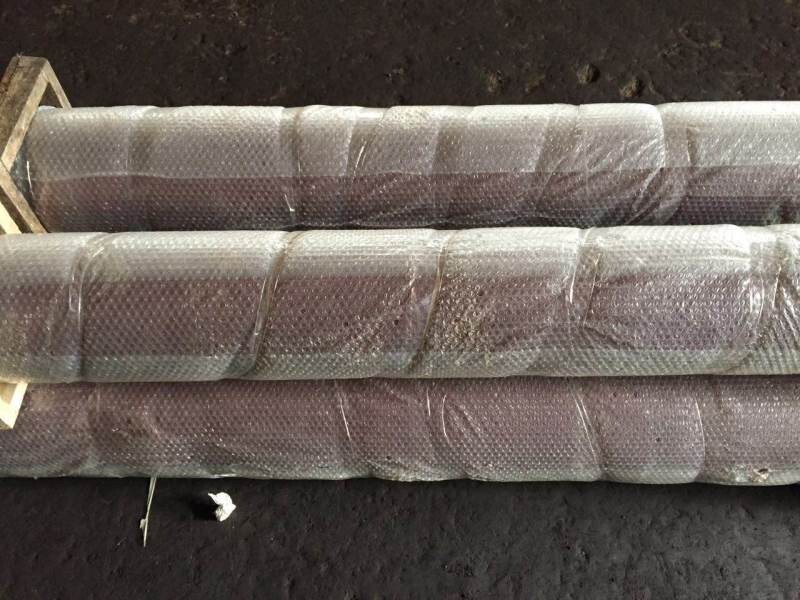

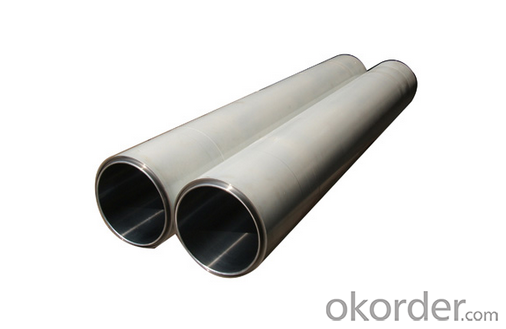
- Q: What are the signs of a damaged concrete pump S valve?
- Some signs of a damaged concrete pump S valve may include leaks, reduced pumping efficiency, irregular or interrupted flow of concrete, excessive wear on the valve components, and difficulty in controlling the concrete output.
- Q: How can a faulty water pump affect the concrete pumping operation?
- A faulty water pump can have several negative effects on a concrete pumping operation. Firstly, a water pump is responsible for supplying water that is used to mix the concrete and maintain its proper consistency. If the water pump is faulty and not functioning correctly, it may not be able to supply the required amount of water, resulting in the concrete mix being too dry or not well-mixed. This can lead to a poor-quality concrete mix that is difficult to pump and may not set properly, compromising the structural integrity of the concrete. Additionally, a faulty water pump can affect the efficiency and productivity of the concrete pumping operation. If the pump is not working efficiently, it may take longer to mix and deliver the concrete, causing delays in the construction process. This can lead to increased costs and potential disruptions to project timelines. Furthermore, a faulty water pump can also impact the safety of the concrete pumping operation. Adequate water supply is essential for preventing the concrete from overheating during the pumping process. If the water pump fails to supply enough water, the concrete can heat up rapidly, leading to a phenomenon called thermal cracking. Thermal cracking weakens the concrete and can cause it to fail prematurely, posing a safety risk to workers and the overall structure. In summary, a faulty water pump can negatively impact a concrete pumping operation by resulting in poor-quality concrete mixes, decreased efficiency and productivity, and potential safety hazards. It is crucial to regularly inspect and maintain water pumps to ensure their proper functioning and prevent any detrimental effects on the concrete pumping process.
- Q: How often should concrete pump accumulators be inspected and replaced?
- Concrete pump accumulators should be inspected on a regular basis to ensure their proper functioning and to prevent any potential issues. The frequency of inspections will depend on various factors such as the manufacturer's recommendations, the intensity of use, and the specific conditions in which the concrete pump is operating. As a general guideline, it is recommended to inspect concrete pump accumulators at least once every six months or after every 500 hours of operation, whichever comes first. However, if the pump is used more frequently or operates under harsh conditions, more frequent inspections may be necessary. During the inspection, the accumulators should be checked for any visible signs of wear or damage, such as leaks, cracks, or corrosion. Additionally, the pressure levels and performance of the accumulators should be tested to ensure they meet the required standards. When it comes to replacement, it is best to follow the manufacturer's recommendations. Typically, accumulators have a lifespan of around 3 to 5 years, but this can vary depending on factors such as maintenance, usage, and environmental conditions. If any significant issues are identified during the inspection or if the accumulators have reached their recommended lifespan, it is advisable to replace them promptly to avoid potential failures and ensure the safety and efficiency of the concrete pump.
- Q: What are the most commonly replaced spare parts for concrete pumps?
- The most commonly replaced spare parts for concrete pumps typically include wear plates, wear rings, and delivery cylinders. These components are subject to constant abrasion and wear due to the nature of their operation, which involves the movement of concrete at high pressures and velocities. Wear plates are usually made of hardened steel and are installed in the hopper and other high-wear areas to protect against the abrasive action of concrete. Wear rings, which are typically made of polyurethane or other durable materials, are used to reduce friction between the piston and cylinder, minimizing wear and maintaining optimal performance. Delivery cylinders, also known as pumping cylinders, are responsible for transferring the concrete from the hopper to the discharge outlet. Over time, the interior surface of the cylinder can become worn or damaged, necessitating replacement to ensure efficient concrete flow. Other commonly replaced spare parts for concrete pumps may include pistons, seals, hydraulic hoses, and couplings, as they are also subject to wear and tear during the pumping process. Regular inspection and maintenance of these components are essential to prevent unexpected equipment downtime and to ensure the long-term reliability and performance of concrete pumps.
- Q: What is the role of a concrete pump seal?
- The role of a concrete pump seal is to prevent leakage and maintain the pressure within the pumping system. Concrete pumps are used to transfer liquid concrete from one location to another, typically from a mixer truck to a construction site. These pumps operate under high pressure to ensure the concrete flows smoothly through the pipeline. A concrete pump seal is a vital component that helps maintain the integrity of the pumping system. It is usually made of durable materials such as rubber or polyurethane, designed to withstand the high pressures and abrasive nature of concrete. The seal is located at the connection points between various sections of the pipeline, including the pump, pipeline joints, and hose connections. The primary function of the seal is to prevent concrete from leaking out of the system. Concrete is a viscous material, and any leakage can cause significant problems, such as a decrease in pumping efficiency, wastage of concrete, and potential damage to the surrounding environment. The seal ensures that the pumping system remains leak-free, allowing for efficient and continuous concrete transfer. Additionally, the seal helps maintain the required pressure within the pumping system. Concrete pumps rely on consistent pressure to ensure the concrete is delivered smoothly and evenly. Any pressure loss due to leakage can lead to uneven flow or blockages in the pipeline, affecting the overall performance of the pump. By sealing the connection points, the seal helps maintain the desired pressure, ensuring the concrete is pumped efficiently. Overall, the role of a concrete pump seal is to prevent leakage, maintain pressure, and ensure the smooth and efficient transfer of concrete from the source to the destination. It is an essential component that contributes to the overall effectiveness and reliability of concrete pumping operations.
- Q: How do I find the right part number for a specific concrete pump spare part?
- To find the right part number for a specific concrete pump spare part, there are a few steps you can follow: 1. Identify the specific part you need: First, determine the exact part you are looking for. This could be a specific component or a replacement part for a particular area of the concrete pump. 2. Consult the equipment manual: Check the equipment manual or documentation that came with the concrete pump. The manual often includes a parts list or diagram, which can help you identify the part number you need. 3. Contact the manufacturer or supplier: Reach out to the manufacturer or supplier of the concrete pump to inquire about the specific part you require. Provide them with the make, model, and serial number of the pump, as well as a detailed description or photograph of the part if possible. They should be able to provide you with the correct part number and any additional information you may need. 4. Use online resources: Utilize online resources such as manufacturer websites, spare parts catalogs, or specialized equipment platforms. These platforms often have search functions where you can input the make and model of the concrete pump to find the corresponding part numbers. 5. Seek assistance from industry experts: If you are still unable to find the right part number, consider reaching out to industry experts or professionals who specialize in concrete pump equipment. They may have the knowledge and experience to help you identify the correct part number based on your specific needs. Remember to double-check the part number provided by the manufacturer or supplier to ensure accuracy before making any purchases. Additionally, it is advisable to keep a record of the part number for future reference in case you need to reorder or replace the part again.
- Q: How can a faulty concrete pump cylinder affect the pumping process?
- The pumping process can be significantly impacted by a faulty cylinder in the concrete pump. The cylinder's role is crucial in the concrete pumping system as it generates the necessary pressure to push the concrete through the pipes and hoses. A decrease in pumping efficiency is one of the main issues caused by a faulty cylinder. If the cylinder is worn out or damaged, it may not generate sufficient pressure to effectively push the concrete. This can lead to a decrease in the pumping rate and overall productivity of the concrete pumping operation. Moreover, a faulty cylinder can cause irregular and inconsistent flow of concrete. This can result in blockages or clogs in the pipes, disrupting the pumping process. Removing these blockages can be time-consuming and costly, as it may require disassembling the pumping system to access and clear the blocked area. Additionally, leaks can occur in the pumping system due to a faulty cylinder. These leaks not only waste concrete but also reduce the overall pressure in the system, impacting the ability to pump the concrete to the desired location. Furthermore, leaks can create a messy worksite, posing safety risks for workers and potentially damaging surrounding structures. Furthermore, the risk of equipment failure is increased by a faulty cylinder. If the cylinder malfunctions or fails completely, it can cause the entire pumping system to shut down. This can result in significant downtime and delays in the concrete pouring process, leading to additional costs and potential penalties. In conclusion, a faulty concrete pump cylinder can have a significant impact on the pumping process by reducing efficiency, causing irregular flow, promoting leaks, and increasing the risk of equipment failure. To ensure smooth and efficient concrete pumping operations, it is essential to regularly maintain, inspect, and replace the cylinder in a timely manner.
- Q: Can I get spare parts for concrete pumps with different types of valve systems, such as S-valve or gate valve?
- Indeed, procuring spare parts for concrete pumps equipped with various valve systems, such as S-valve or gate valve, is entirely feasible. Manufacturers and suppliers of concrete pumps generally offer an extensive selection of spare parts, which encompass valves. These spare parts can be procured either directly from the manufacturer or via authorized distributors. To ensure compatibility, it is vital to furnish precise information regarding the concrete pump model, valve type, and any other pertinent details when placing an order for spare parts. Moreover, there exist specialized firms that exclusively concentrate on providing spare parts for concrete pumps, irrespective of the valve system employed. These entities often possess a comprehensive inventory of spare parts and can offer assistance in identifying and sourcing the necessary components for your specific concrete pump.
- Q: How can a faulty battery affect the operation of the pump?
- The operation of a pump can be significantly affected by a faulty battery. Firstly, inadequate power supply from a faulty battery can lead to slow or weak pumping action. This can result in the pump's inability to generate the required pressure or flow rate, causing inefficient or ineffective operation. Moreover, intermittent power supply caused by a faulty battery can cause inconsistent pumping action, with the pump starting and stopping unpredictably. These interruptions can create inefficiencies, diminish the pump's performance, and potentially harm the equipment or system being operated. Furthermore, a faulty battery may have a limited charge retention capacity. This can restrict the pump's operating time, necessitating frequent recharging or battery replacement. In situations where continuous or prolonged pump usage is necessary, a faulty battery can disrupt operations, resulting in downtime and reduced productivity. Additionally, the overall lifespan of the pump can be affected by a faulty battery. If the battery fails to consistently provide the required power, the pump may experience strain or excessive wear, potentially shortening its operational life. In conclusion, a faulty battery can have numerous unfavorable effects on the operation of a pump, including reduced performance, inconsistent pumping action, limited operating time, potential damage, and decreased equipment lifespan. It is crucial to conduct regular maintenance and promptly replace faulty batteries to ensure optimum pump performance and longevity.
- Q: How do concrete pump spare parts contribute to the overall performance of the pump?
- Enhancing the overall performance of the pump, concrete pump spare parts play a crucial role. These spare parts are specifically designed to endure the harsh and demanding conditions of pumping concrete, guaranteeing the efficiency and longevity of the pump. An important factor in the pump's overall performance is the ability of concrete pump spare parts to enhance pumping capacity and efficiency. These spare parts, including pump cylinders, pistons, and valves, are designed to ensure a consistent and smooth flow of concrete without any interruptions. By maintaining a steady flow, these spare parts maximize the pump's capacity, enabling it to handle larger volumes of concrete in less time. Furthermore, concrete pump spare parts contribute to the pump's performance by improving its durability and reliability. These spare parts are made from high-quality materials like hardened steel and wear-resistant alloys, specifically chosen to withstand the abrasive nature of concrete. This ensures that the pump can operate continuously without experiencing premature wear or failure. Concrete pump spare parts also ensure the safety of the pump operators and the environment. For instance, wear plates and cutting rings prevent concrete leakage, reducing the risk of accidents and environmental contamination. Similarly, seals and gaskets provide a secure and tight connection between different components, preventing leaks or malfunctions. Moreover, concrete pump spare parts reduce downtime and maintenance costs. As these spare parts undergo wear and tear during operation, they are designed to be easily replaceable. This allows for quick and efficient repair or replacement of damaged parts, minimizing the pump's downtime. Additionally, using genuine and high-quality spare parts reduces the need for frequent repairs and maintenance, resulting in lower overall maintenance costs. In conclusion, concrete pump spare parts are vital components that significantly contribute to the pump's overall performance. They enhance its pumping capacity, durability, and reliability, ensuring a smooth and efficient operation. Furthermore, these spare parts promote safety, reduce downtime, and minimize maintenance costs, making them indispensable for the optimal performance of concrete pumps.
Send your message to us
Concrete Pump Delivery Cylinder DN200*1775(SCHWING)
- Loading Port:
- Shanghai
- Payment Terms:
- TT OR LC
- Min Order Qty:
- 2 pc
- Supply Capability:
- 1000 pc/month
OKorder Service Pledge
OKorder Financial Service
Similar products
Hot products
Hot Searches
Related keywords
